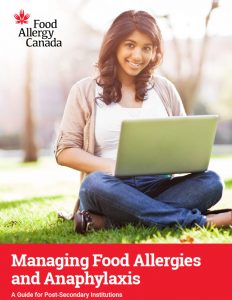
Planning a dinner party now that pandemic restrictions are easing? Enjoying a meal with your friends and family is one of life’s simple joys! As you prepare for your event, you may have some worries about what to make especially if some of your guests have dietary restrictions, which can make things feel more complicated.
What are dietary restrictions?
A dietary restriction means the person has limitations to certain foods which they cannot or will not eat. There are many reasons for dietary constraints and they differ from person to person. Some of the more common ones include dietary restrictions based on a medical condition such as a food allergy, sensitivity or disease management. Other restrictions are based on religious practice while some are based on personal lifestyle choices.
Here are 5 of the most common dietary restrictions you should know about and tips for hosting an event that is safe and enjoyable for everyone at the table.
1. Food allergies
2. Intolerances
3. Medical nutrition therapy
4. Vegetarian / vegan
5. Religious dietary practices
1. Food Allergies
Food allergies are more common than you may think! Over 3 million Canadians are affected by food allergy, that’s 7.5% of the population. Allergic reactions involve the body’s immune system and can happen very quickly and in the worst cases cause anaphylactic shock or death. Watch for symptoms such as changes to skin, shortness of breath, nausea, cramps, vomiting, diarrhea, dizziness and anxiety. Right now, there is no cure for food allergies so the only way to prevent allergic reactions is to completely avoid the specific foods responsible. In Canada, the most common allergens in food are known as the priority allergens and listed as:
- Peanuts
- Tree Nuts
- Fish
- Shellfish
- Eggs
- Milk
- Soy
- Wheat
- Sesame seeds
- Mustard
Sources:
Food Allergy Canada – Food Allergy Canada’s mission – Food Allergy Canada
Health Canada– Food allergies – Canada.ca and Allergens and gluten sources labelling – Canada.ca

2. Food intolerances and sensitivities
Food intolerance is an unpleasant reaction to food but it is not a food allergy. It does not involve the immune system and is not life-threatening. Symptoms of food intolerance can be inconvenient and painful and often involve the gastrointestinal system. For example, nausea, pain or cramps, vomiting and diarrhea are just a few of the typical symptoms. Some chemicals may cause reactions such as headaches. Food intolerance occurs when the body has difficulty digesting or absorbing certain foods or components of those foods. For example, intolerance to lactose, which is found in milk and other dairy products, is the one of the most common food intolerances. Food sensitivities can also be related to ingredients such as sulphites, gluten and some simple carbohydrate containing foods (FODMAPS).
Sources:
Health Canada Food Allergies and Intolerances – Canada.ca
Dietitians of Canada – Food Allergies and Intolerances – Unlock Food
3. Medical nutrition therapy
Medical nutrition therapy is a nutrition-based treatment provided by a registered dietitian or doctor. It includes a nutrition diagnosis as well as therapeutic and counseling services to help manage medical conditions such as celiac disease and diabetes.
Celiac disease: Gluten-free versus Gluten sensitivity
Celiac disease is a common disorder that affects about one percent of the population. It is a condition where the small intestines are damaged by gluten containing foods. Gluten is a group of proteins found in many grains including wheat (couscous, bulgur, spelt, kamut), triticale, barley and rye and foods that are made with them. Foods that contain gluten include breads, pastas, crackers, baked goods, many grains, and some beverages too. A person with celiac disease needs to stay on a gluten-free diet.
Some people do not have celiac disease but find that they are sensitive to gluten and develop symptoms such as bloating, abdominal pain and diarrhea. They find that avoiding gluten-containing foods is helpful in relieving their symptoms.
Source: Canadian Celiac Association – Gluten Related Disorders https://bit.ly/3C7Esb4
Diabetes: Carbohydrate balance
Rates of diabetes continue to rise and it’s estimated that one in three Canadians has diabetes or prediabetes. People with diabetes have an impaired ability to metabolize carbohydrates either because they produce little to no insulin (type 1 diabetes) or can’t absorb insulin (type 2 diabetes). Food is the key to managing diabetes and healthy meal planning plays an important role. Focusing on foods with a low glycemic index can help keep blood sugar levels balanced.
Source: Diabetes Canada About diabetes – Diabetes Canada
4. Vegetarian / Vegan
Vegetarian diet varies widely depending on the person’s choice. These choices may be based on ethical restrictions or sustainability. A combination of plant and animal foods may be included, such as dairy and eggs, or only plant foods. Here is a list of restrictions for your reference:
- Lacto-ovo Vegetarian – eats dairy, eggs and plant foods
- Ovo Vegetarian – eats only eggs and plant foods
- Lacto Vegetarian – eats dairy and plant foods
- Vegan – eats only plant foods and avoids all animal products
- Semi-vegetarian or flexitarian – eats mostly vegetarian but occasionally consumes meat, meat products, poultry, and fish
5. Religious Dietary Practices
Many religions have special dietary laws or practices. While not an exhaustive list, here are a few religions and their dietary practices to keep in mind when hosting an event.
- Christian – Some may not eat meat on Fridays during lent.
- Judaism (Kosher) – Kosher meat products need to be butchered in a certain manner and cannot include shellfish and pork. Guests keeping kosher will also refrain from eating dairy and meat at the same time.
- Muslim (Halal) – Halal meat is prepared in a specific manner.
- Hindu – Eating beef is prohibited
- Buddhist – follows a primarily a vegetarian approach
Source: The Business of Dietetics, Dietary Restrictions of Other Religions – Journal of the American Dietetic Association (jandonline.org)
TIPS to deal with dietary restrictions

- Ask your guests about their dietary needs
To accommodate our guest’s needs, you first need to uncover what their dietary preferences are. Ask them! When you invite people for a meal, be sure to check with your guests about their special dietary needs and be especially mindful of food allergies. Once you know, you can discuss the menu with them ahead of time and ask how they can best be accommodated.
- Make simple swaps to your menu to accommodate dietary preferences
Build your menu with food allergies and dietary restrictions in mind. Steering clear of them will minimize the chance of an emergency, and increase the peace of mind of guests. There are easy ways to swap ingredients to accommodate dietary preferences. For example, using olive oil instead of butter means that the vegans and those with dairy allergies can enjoy the dish too. Use vegetable stock instead of chicken or beef stock so more people can enjoy them.
- Have Fun
Remember that you don’t have to accommodate your guests for every single dish. Be sure you have a well-planned meal with a variety of foods that all of your guests can enjoy and feel well fed.
Dietitians can help
Want to discover more ways to accommodate your guests’ dietary needs? Connect with a dietitian to make healthy choices. Dietitians look beyond fads to deliver reliable, life-changing advice.
Speak to a registered dietitian to manage your menu for dietary restrictions, religious dietary laws, nutritional choices and requirements, and food allergies you need to know to provide an exceptional, respectful, and safe experience for all your guests.
Do you have a question you’d like to ask a dietitian? If so, please send it along to us at Lucia@WeilerNutrition.com
Please note: The information in this series answers questions on general topics, please talk to your health care provide if you have questions about your own health.
 Concerned about food allergy? It can be deadly and is something we all need to be more aware of. Students with food allergies are particularly vulnerable as they start college or university because of the big transition to more independent eating and living.
Concerned about food allergy? It can be deadly and is something we all need to be more aware of. Students with food allergies are particularly vulnerable as they start college or university because of the big transition to more independent eating and living.